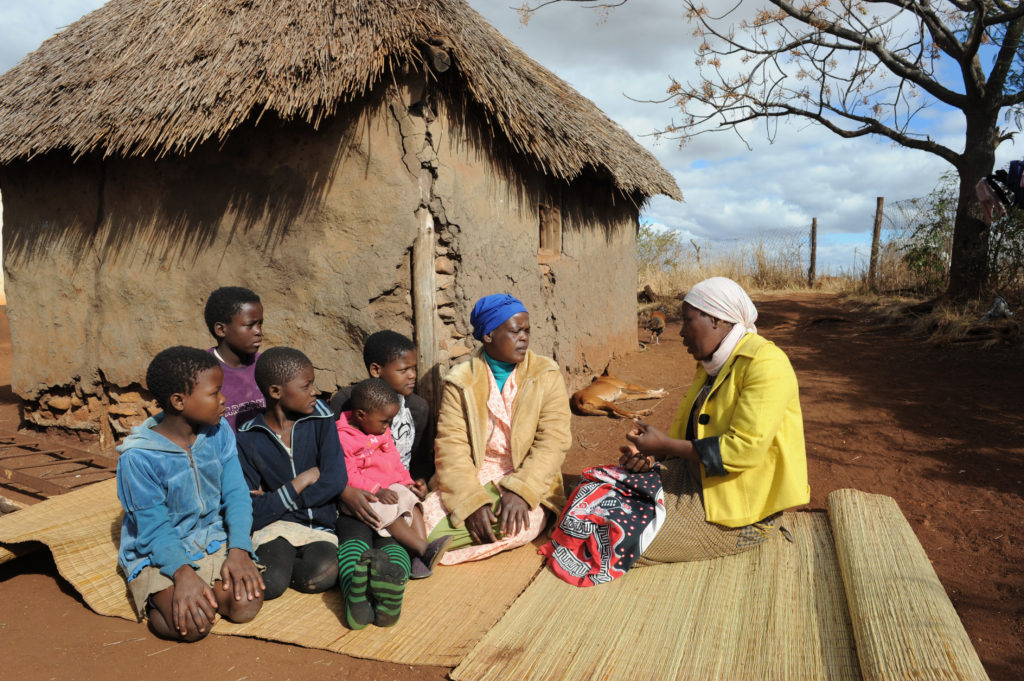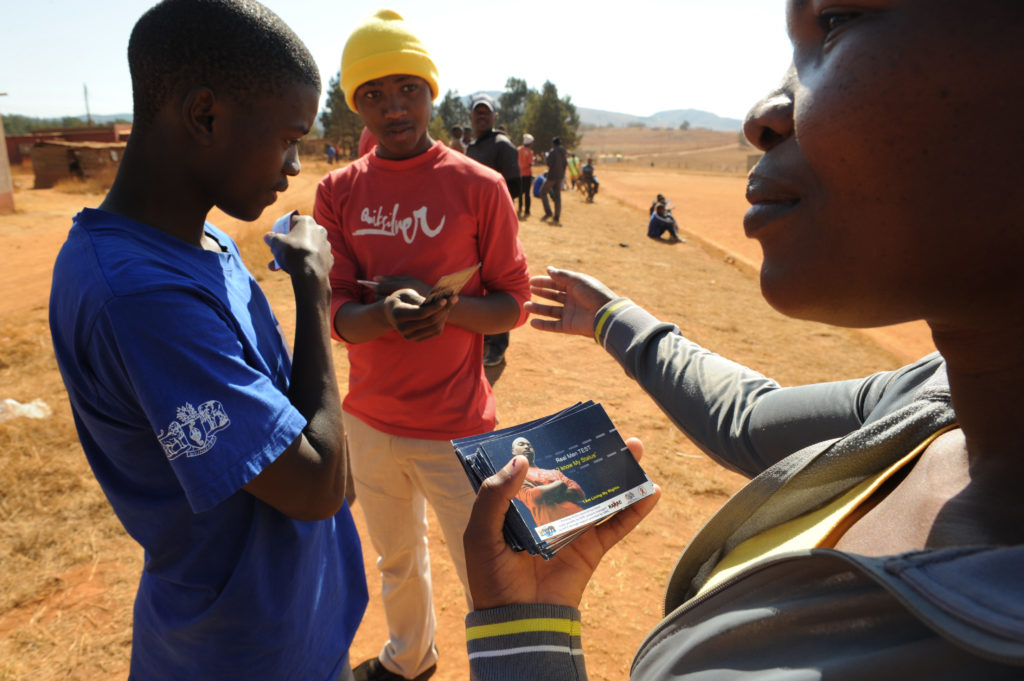Published: 09/30/2020
Dr. Geldsetzer has set himself the difficult goal of impacting policy and clinical practice with his research; a goal he hopes to reach at Stanford by utilizing rigorous methodology, cross-disciplinary collaborations, and strong in-country partnerships.
Image by Morgana Wingard, CC BY-NC 2.0.
It can be hard to pin down the research of Global Health Faculty Fellow Pascal Geldsetzer. His work so far has focused on improving healthcare for chronic diseases in low-and-middle-income countries, but his methodologies vary widely, including everything from causal inference techniques in electronic health record data to machine learning and randomized trials. When forced to pinpoint a unifying theme, Dr. Geldsetzer points to the rigor in his methods.

“Whether or not it directly fits within my research agenda is a little bit less important to me,” he said, “as long as we’re able to apply rigorous and convincing methods to answer a question that can really make a difference to clinicians, researchers, or policymakers.”
As a newly appointed assistant professor in the Division of Primary Care and Population Health Dr. Geldsetzer is focused on building roads towards implementation, laying the ground work on which policymakers and clinicians can confidently proceed. He is quick to acknowledge the challenges, but also resourceful, developing and utilizing key partnerships to overcome the setbacks that so often prevent research from turning into policy or practice.
1
You have been working on non-communicable disease interventions using community health workers. Can you talk about the problem you are addressing here and why you are interested in this solution?
There’s a huge deficiency in the number of nurses and physicians in low- and middle-income countries (LMICs). One promising strategy is to shift some components of care from physicians and nurses towards community health workers. While we are not in any way trying to replace physicians, there are many parts of what a physician does that can be done safely through people who have had much less training, or even through artificial intelligence and other technology.

My work in this area is focused on pushing the envelope as to how far we can safely shift towards providing care through community-based structures.
For example, to my knowledge, using community health workers to directly initiate medications for high blood pressure has not been done in LMICs. At best they would screen people for high blood pressure and then refer them to a healthcare facility. But the more links you have in these care pathways, the more people you’re going to lose. Many people are not going to go to the healthcare facility because they’ve got other priorities, or they go once and don’t return. We can even use community health workers to nudge people towards taking up interventions, for example improving uptake of low-sodium salt. They could even deliver it or provide free samples.

These kinds of interventions can do more than simply provide information, they can affect behavior, and I really hope the evidence can make a difference on the ground.
2
You’ve been very successful in forging non-academic partnerships in your research, like the Clinton Health Access Initiative and different ministries of health. What is the value of these partnerships and why aren’t they utilized more frequently in academic research?
I see these partnerships as a necessity to do meaningful research in this space. You need to do something that people on the ground are actually interested in answering.
Coming from outside with an idea is the wrong approach — you may not be answering a question that is promising or the way you designed it may not actually be feasible on the ground.
But the problem is that the incentives in academia don’t always align well with building intimate partnerships on the ground. There will be a grant call on a specific topic so you need to come up with something that fits for that particular call. There are deadlines as well, and that time pressure doesn’t always allow you to develop the appropriate relationships. Also, it is often difficult to publish setting-specific studies in high-impact journals. And then, of course, the incentive is to be involved in a lot of different projects and be publishing frequently, which doesn’t lend itself well to spending a lot of time in one particular place to build strong partnerships.
3
What is an example of research you have done that has impacted policy or practice?
We did one trial in Dar es Salaam where we delivered HIV drugs through community health workers. People were overburdened going to these healthcare facilities frequently to pick up their medications. It was inconvenient and time consuming — people lost time from income generating activities. So for stable individuals we delivered HIV medications directly to homes or to other meeting points in the community, saving them time and money.

We showed it can be done without any major catastrophes — that was enough to have the ministry continue implementing this program, and it’s still running today.
But I will be honest, it’s very hard to do research that directly affects policy or clinical practice. It’s something that I struggle with. Publishing in high impact journals is one thing. Doing work where you really feel that the results have made a difference to someone is a whole other ballgame. It’s a challenge that I’ve set myself to achieve during my time at Stanford.
4
You are working on a project involving machine learning and satellite imagery. You’ve called it a “moonshot” project. Can you tell us a little about that?
This is a project I’m working on with Eran Bendavid and Stefano Ermon. Currently we are monitoring global health indicators using household surveys conducted at best every few years. They sample a few specific spots in a country, interview people, maybe take some blood tests, but they miss most areas in a country and they’re quite expensive.

The problem is that we don’t have a continuous flow of data from most places. So instead of using household surveys, we are trying to leverage satellite imagery – images that are taken all the time for all areas in a country. Stanford EARTH is already actively using satellite imagery to predict poverty in low-and-middle income settings. We are hoping to extend this work to health by using machine learning to directly predict health indicators.
If this works, policymakers would be able to closely track health indicators over time rather than having to rely on extrapolations from household surveys from years ago. It would really revolutionize our approach to monitoring health and healthcare coverage because you would have data from everywhere in a country on a continuous basis.
5
What are you excited about now that you are at Stanford?
I’m super excited by the collaborative nature at Stanford — how people come together at these centers from different research fields. I feel I can really benefit from this because the research field I am in is quite interdisciplinary.
For example, for this moonshot satellite imagery project —collaborating with people like Stefano Ermon, who has tons of experience in applying machine learning to satellite imagery, is really valuable.
Or a new focus of my work is the application of causal inference techniques in electronic health record data to answer important clinical questions. Collaborating with clinicians for this has been invaluable and surprisingly easy so far here at Stanford. I’m excited to see what new doors open and what other opportunities emerge in the future.
